Wandering through the Latin Quarter, I couldn’t miss the Panthéon’s massive dome towering over the city. This neoclassical monument isn’t just a pretty face—it’s actually the resting place of France’s greatest minds, like Voltaire, Rousseau, and Marie Curie.
Every time I visit, I feel like I’m walking through centuries of French history, right in the middle of one of the world’s most iconic cities.
Inside, I paused among soaring columns and intricate artwork, feeling the hush among memorials for people who changed the world. The dome pulls your gaze up, and when I reached the top, I got a view that stretched all the way across Paris.
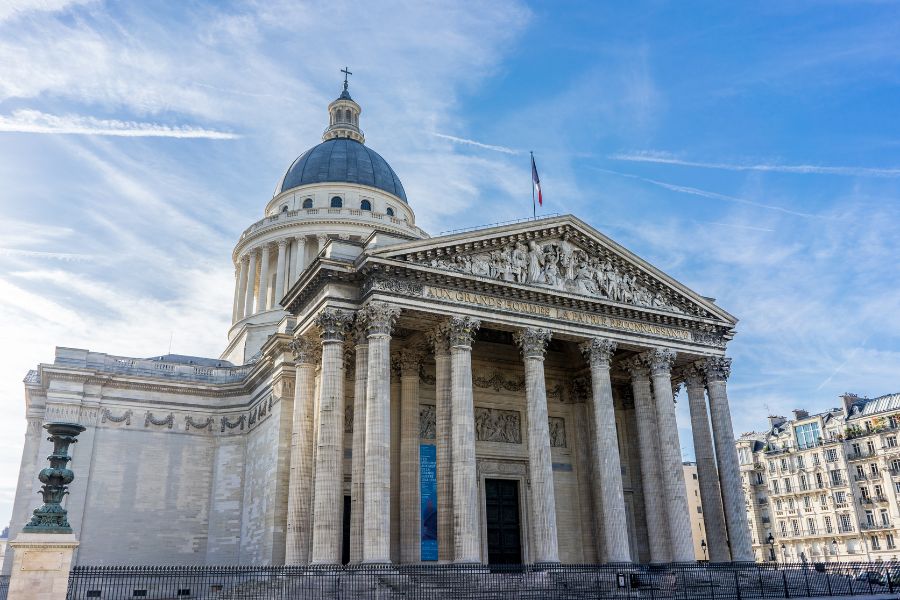
Standing there, it hit me—there’s something wild about being among France’s legends and looking out over this city.
The History and Architectural Grandeur of the Panthéon
Stepping into the Panthéon, I felt its deep connection to French history and its architectural ambition. It has seen revolutions, transformations, and tributes to heroes, and honestly, it’s more than a monument—it’s a peek into France’s soul.
Origins During the French Revolution
The Panthéon’s story kicked off in the mid-1700s, when France was bracing for massive change. King Louis XV ordered it built as a church for Sainte-Geneviève, Paris’s patron saint, after he survived a rough illness.
He picked Jacques-Germain Soufflot as the architect, hoping for something bold—a mix of classic style and new engineering.
By the time they finished in 1790, though, the French Revolution had turned everything upside down. Revolutionaries swept in and decided the Panthéon would no longer just be a church.
They wanted it to honor the men who shaped the country, whether through their own choice or the force of revolution. Voltaire and Rousseau, Enlightenment heroes, became some of the first to be reburied here.
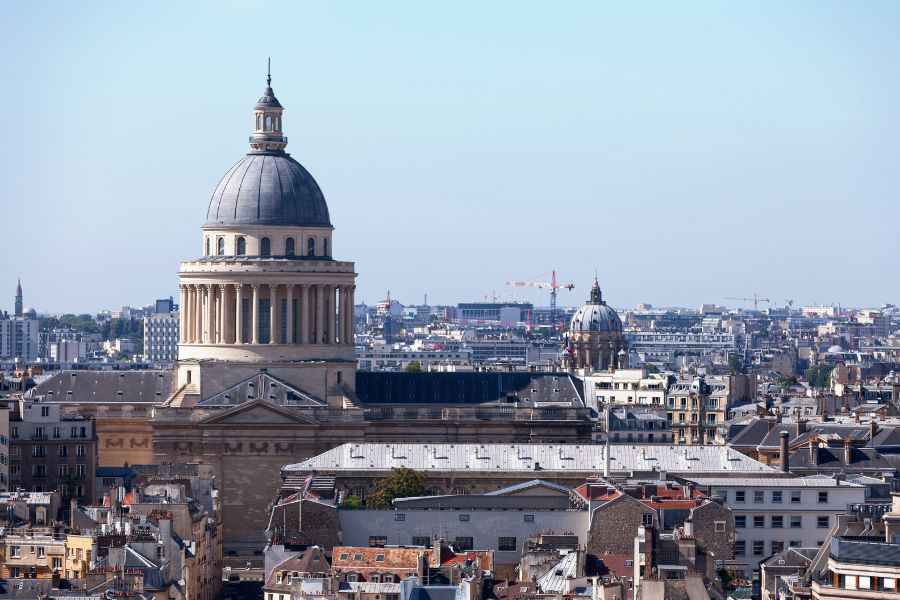
The building’s purpose soon symbolized a new, secular France. Faith gave way to the ideals of liberty, equality, and fraternity.
Neoclassical Design and That Epic Dome
The Panthéon stands as a masterpiece of Neoclassical architecture. The outside looks a bit like an ancient Greek temple, with those tall Corinthian columns and the big triangular pediment.
When I walked in, the open space made me look straight up at the dome—a real marvel you can spot from all over the Latin Quarter.
Some architectural details really stood out:
- Corinthian columns: These towering pillars instantly add a sense of drama.
- Epic dome: The triple-layered dome shows off baroque flair but keeps a neat symmetry. It’s one of Paris’s most recognizable shapes.
- Sculpted friezes and reliefs: Artwork wraps around the building, showing off moments from French history.
The dome doesn’t just look good from below. When I climbed to the top, the city spread out beneath me. That view alone made me understand why people rave about this place.
Transformation from Church to Mausoleum
The Panthéon started as a Catholic church, but its role changed fast. The French Revolution set its transformation in motion, turning it into a secular mausoleum.
Napoleon handed it back to the Church for a while in 1806, but the building kept shifting purposes during the wild nineteenth century.
Now, the crypt holds the remains of some of France’s greatest minds—Marie Curie, Victor Hugo, Émile Zola, and more. Walking those quiet halls, I felt the respect France gives its thinkers and rebels.
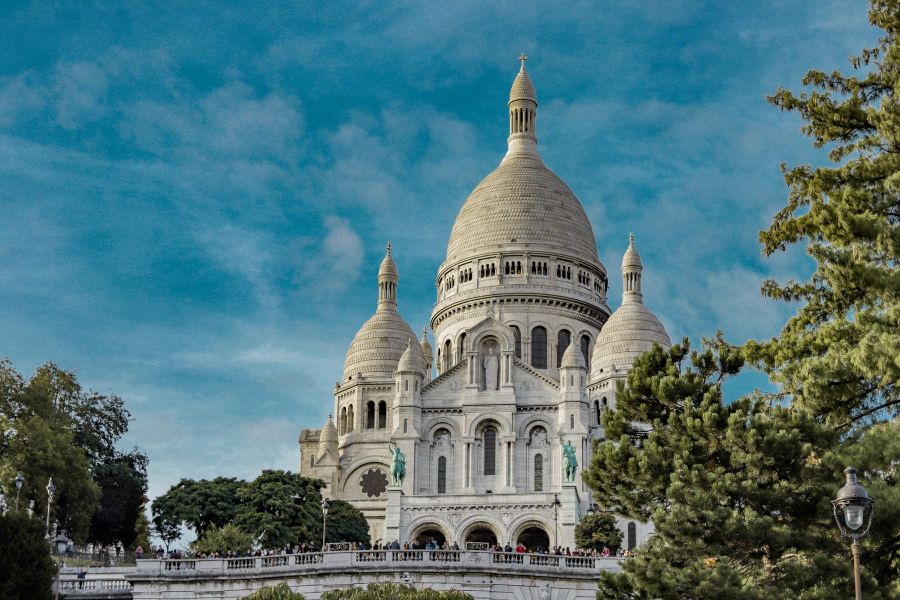
The Panthéon celebrates not just faith, but the people and stories that shaped Paris. Its journey from sanctuary to national monument mirrors the city’s own wild ride through revolutions and empires.
Standing Among France’s Greats: The Legends Inside
Inside the Panthéon, I found myself surrounded by tombs of people who truly shaped France. There’s a real sense of walking through living history here, where ideas and struggles come alive through the names on the walls.
Voltaire: The Voice of Reason and Philosophical Change
When I stood at Voltaire’s tomb, I could almost hear his sharp words echoing. Voltaire fought for freedom of thought and wasn’t shy about calling out injustice.
His writing challenged old ideas and demanded tolerance and individual rights, even when it was risky to do so.
Voltaire’s influence on the Enlightenment is just massive. He used wit and clever arguments to push for human rights and to question those in charge.
People still call him the “Voice of Reason,” and honestly, it fits. He believed in shaking up traditions that hurt people.
His legacy isn’t just about books—it’s about the right to speak up. I noticed visitors lingered here, maybe because Voltaire opened the door for questions we’re still asking.
The Panthéon doesn’t just honor him as a writer, but as a real champion for justice.
Rousseau: Champion of Human Rights and Democracy
Just a few steps away, Rousseau’s tomb felt quieter, almost meditative. Rousseau believed people are basically good and that equality matters.
His ideas fueled the French Revolution and shaped democracy itself. He argued that government gets its power from the people—not from kings or old rules.
His work, especially The Social Contract, still pops up in debates and classrooms everywhere. Rousseau stressed that being part of society means respecting human rights and lifting up the oppressed.
He inspired movements for freedom and equality far beyond France. Seeing his tomb reminded me that the fight for rights and democracy is never really over.
His influence helped shape both the laws and the spirit of modern France.
Marie Curie and the Rise of Scientific Achievement
Marie Curie’s tomb always draws me in. She was the first woman to rest here on her own merit, and that’s huge.
Curie won the Nobel Prize twice for her work in physics and chemistry. Her research on radioactivity changed science for good and led to new cancer treatments.
But her story isn’t just about discoveries—it’s also about breaking barriers as a woman in science. She earned the Legion of Honor and inspired generations.
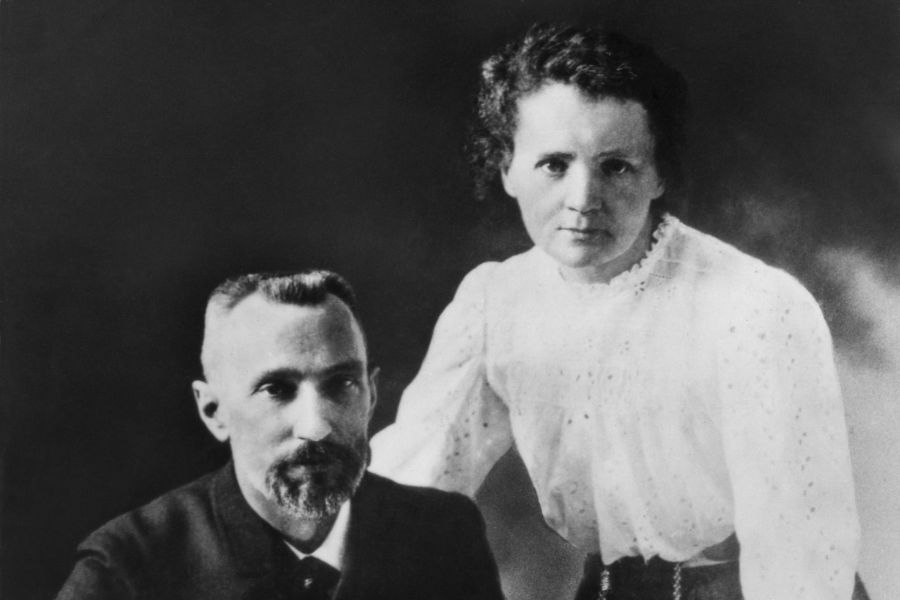
Young visitors often gather here, drawn by her courage and brilliance. Her grave stands for both scientific achievement and the fight for gender equality.
Other Historical Figures and National Heroes
It’s not just the famous names here. The Panthéon also honors people like Jean Moulin, a leader of the French Resistance in World War II.
He represents bravery and loyalty. Many others buried here fought for freedom, art, and the nation’s core values.
The monument feels like a living archive, filled with the memories of those who shaped philosophy, science, and democracy. Their stories prove that history is made by people who speak up, not just by rulers.
As I wandered the quiet corridors, I felt surrounded by the true heroes of France—each resting place a lesson in what it means to shape a nation.
Admiring the Panoramic Dome View
At the top of the Panthéon, Paris really seems to stretch out forever. The dome gives you sweeping, open views and turns anyone into a temporary Parisian lookout.
Climbing the Dome: Tips and What to Expect
To get to the dome, I climbed 206 winding steps. The staircase is narrow and can feel steep, especially if it’s crowded.
There’s no elevator, so comfy shoes are a must. Most people manage the climb, but I saw a few folks pause for a breather.
Halfway up, I found a small platform to rest and check out some architectural details. The columns and arches look even more impressive up close.
That last stretch gets a bit tight—I had to duck my head a couple times. I carried a small bottle of water, which helped since the stairwell gets warm, especially in summer.
When I finally reached the colonnade, the cool breeze and open air felt amazing.
Iconic Paris Landmarks from Above
The dome’s view is one of the best I’ve found in Paris. I could spot the Eiffel Tower off in the distance, rising above the rooftops.
Notre-Dame’s towers stood out, and I saw the golden dome of Les Invalides too.
Looking down, the Latin Quarter’s classic streets and old buildings sprawled out below me. Montmartre’s Sacré-Cœur perched on its hill caught my eye as well.
Watching people in the square below, they looked almost like tiny figures on a map.
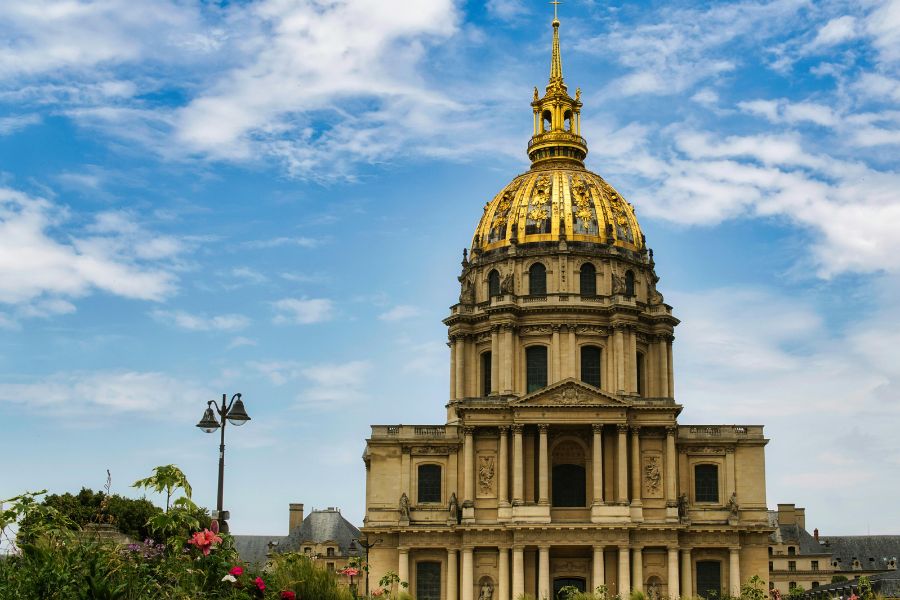
Taking it all in, I noticed the mix of modern city life and timeless architecture. It’s the kind of scene that makes every walk through Paris feel special.
Photography, Souvenirs, and Keepsake Moments
The dome’s 360° platform is perfect for photos—wide shots, close-ups, whatever you like. Early morning or late afternoon sunlight gives Paris a golden glow that makes pictures pop.
I used my phone and a small camera since big gear is tough on the climb. There are spots to pause and set up shots without blocking others.
If you love cityscapes, bring a polarizing filter for sharper images. Snapping a selfie with the Eiffel Tower behind me became one of my favorite memories.
Near the exit, I stopped in the gift shop and picked up a vintage postcard with the Panthéon’s dome. Simple, classic, and easy to tuck in a bag.
They also had magnets and keychains, which make great little keepsakes or gifts.
Connecting the Panthéon to Parisian Culture and Neighborhoods
After leaving the Panthéon, I wandered through the nearby streets and really felt the pulse of Parisian life. The Latin Quarter blends history, culture, student buzz, and the simple joy of stumbling into a bakery or hidden café.
The Latin Quarter: Arts, Cafés, and Student Life
Stepping outside, I landed right in the heart of the Latin Quarter. This neighborhood is famous for its winding streets, energetic Sorbonne students, and colorful cafés.
Artists sometimes set up their easels near bookshops. Readers get lost for hours inside places like Shakespeare and Company.
Street musicians play along Rue Mouffetard, adding a soundtrack to the day.
It’s easy to see why people call the Latin Quarter the “capital of art.” Old buildings mix with modern jazz clubs, poetry nights, and indie cinemas.

The jumble of students, tourists, and artists means every visit feels a bit different.
Dining Near the Panthéon: Restaurants, Patisseries, and Cafés
Food is a big part of the Panthéon experience. Just steps away, I found everything from classic French bistros to patisseries stacked with fresh pastries.
One of my favorite lunches was at Le Comptoir du Panthéon, where I tried duck confit while watching the world go by on the plaza.
If you’re in a hurry, boulangeries serve up croissants and baguettes that are just as good as anywhere else in the city.
Coffee lovers have plenty of cozy cafés with outdoor tables—perfect for people-watching. I’d suggest grabbing a tarte au citron at Odette, or just settling in with a book and an espresso.
Itineraries That Capture the Essence of Paris
Planning a day around the Panthéon lets you see some of Paris’s best corners. I like to start with the dome’s city view, then wander into the Latin Quarter’s little galleries.
Here’s a simple route I love:
| Stop | What to Experience |
|---|---|
| Panthéon | Rooftop views, historic crypt |
| Rue Mouffetard | Open-air market, local shops |
| Montparnasse | Artists’ studios, bakeries |
| The Marais | Modern art, Jewish heritage cafés |
| Montmartre | Scenic hills, Sacré-Cœur, painters |
Mixing in café stops and patisserie breaks keeps me going. Whether I’m tracking down film locations or watching the sunset from Montmartre, each moment adds to my own picture of Paris—a city that celebrates art, life, and food on every street.
The Panthéon in the Context of French and European History
When I stood outside the Panthéon, I realized this place isn’t just a grand monument.
It’s really a powerful symbol of France’s struggle for liberty and its long fight against totalitarianism. You can almost sense its impact on European intellectual life just by looking at it.
Revolution, Liberties, and The Rise of Humanism
King Louis XV ordered the Panthéon built in the late 18th century.
But after the French Revolution, people transformed it from a church into France’s secular temple, one that celebrates liberty and human achievement.
When I walked among the tombs of Voltaire and Rousseau, I could feel how ideas like freedom, reason, and rights echo through its halls.
The French Revolution put liberty at the heart of not just France, but all of Europe.
As a visitor, it’s obvious the Panthéon became a kind of blueprint for other memorials in Europe.
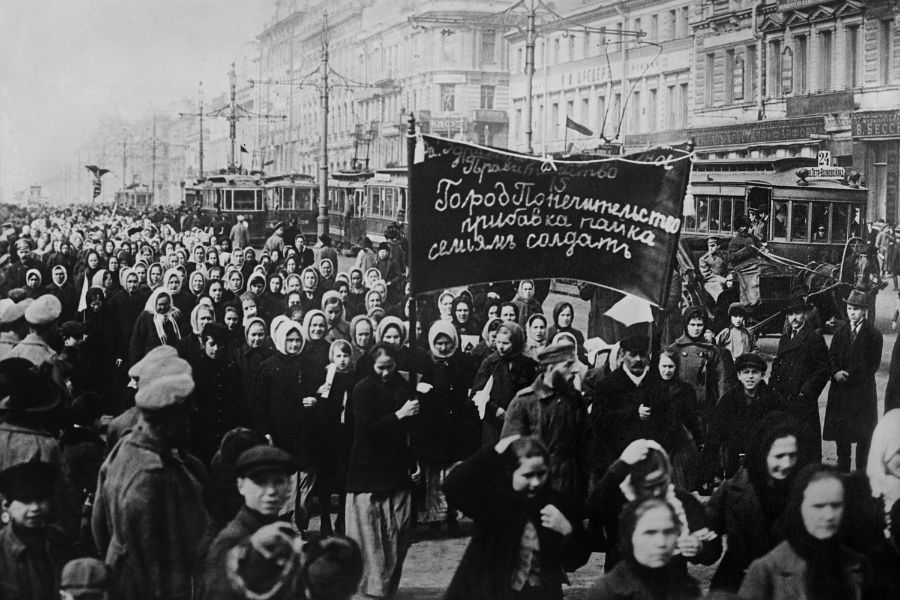
The stories of those honored here—men and women who fought for justice and human dignity—remind me that this place really stands at the birthplace of modern citizenship and humanism.
Links to the First World War and Modern Movements
During World War I, the Panthéon took on new meaning.
It became a place to honor those lost at the front, tying the building’s history to France’s turbulent 20th-century struggles.
I noticed memorial plaques inside that recall fallen soldiers, and the immense dome now stands as a quiet witness to the cost of war.
In the 20th century, as France stood against Nazism and totalitarianism, the Panthéon’s role shifted again.
It commemorates figures who resisted oppression and championed modern liberties—people like Jean Moulin, a leader of the French Resistance.
It’s fascinating how the Panthéon connects Paris’s medieval roots, early modern debates, and even the more recent shifts in Europe and the Middle East.
This history isn’t hidden; it’s in every creaky floorboard and marble plaque I passed.
Panthéon’s Symbolism in Literature, Arts, and Memory
Writers, artists, and thinkers have turned to the Panthéon’s symbolism for centuries. When I flip through French Romantic poems or catch glimpses of avant-garde art, I can’t help but notice how often this monument pops up.
Its grand neoclassical dome grabs the eyes of painters, photographers, and filmmakers. Honestly, it’s hard to imagine Paris in art without some nod to the Panthéon.
Paris brims with stories and myths, and the Panthéon sits right in the middle of so many of them. Victor Hugo’s funeral procession wound past its columns; today, people still gather there for commemorations.

This building isn’t just a relic or a history lesson. It’s a living piece of Parisian—and even European—memory. For me, it stands for modernity, creative freedom, and that shifting idea of what national identity really means.

